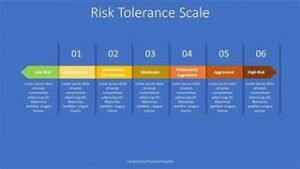Understand Your Risk Tolerance
Risk tolerance refers to the risk you’re ready to take when investing in stocks, bonds, and funds.
If you’ve got high patience for risk, you’re secure with the probability of losing money in trade for the likelihood of achieving higher gains. This makes you a hostile investor. But if you have a low risk tolerance, you choose investments that aren’t likely to lose value. It shows you’re a moderate investor.
You can invest more aggressively if you have more time for your funds to recover from a potential loss. If you require funds soon and can’t afford to lose money on your funds, you’ll need to be more moderate.
 In other words, the more time you have and the more violently you fund, the less you’ll have to fund.
In other words, the more time you have and the more violently you fund, the less you’ll have to fund.
Know Your Time Sphere
The time sphere refers to the number of months, years, or decades you plan to hold an investment before selling it to achieve a specific goal.
Ambition.
Your time perspective is influenced, in part, by your financial goals. For example, if you hope to buy a home in the next five years, your time sphere for the amount you spend on the house is five years. But i
But if you aim to retire in 25 years, your time horizon is 25.
What Is Risk Patience?
Risk patience is the degree of risk a funder is willing to endure, given the volatility in an investment’s value. It is an essential component of investing and often determines the type and amount of investments an individual chooses.
Greater risk tolerance is often synonymous with investing in stocks, index funds, and exchange-traded funds (ETFs). In comparison, lower risk tolerance is usually associated with purchasing bonds, bond funds, and income funds.
 Comprehending Risk Patience
Comprehending Risk Patience
All funds involve some degree of risk, and knowing one’s risk tolerance level helps investors plan their entire portfolio and determine how they invest. Investors are classified as aggressive, moderate, or conservative based on risk tolerance.
Risk tolerance assessments, including risk-related surveys or questionnaires, are available online. Investors should also review historical returns for different asset classes to determine the volatility of various financial instruments.
One factor that affects risk tolerance is the investor’s time horizon. Having a monetary goal with a long-term horizon, a funder may have more significant benefits by cautiously investing in higher-risk assets, such as stocks. Alternatively, lower-risk cash investments may be appropriate for short-term financial goals.
An investor’s future earning capacity and other assets, such as revenue, pension, Social Security, or an inheritance, affect risk tolerance. Investors can take more significant risks with investable assets when they have other, steadier sources of funds available. Moreover, investors with a more extensive portfolio may be more tolerant of risk, as the loss percentage is much less in a more extensive portfolio than in a smaller one.

Violent Risk Tolerance
A violent investor with a high-risk tolerance is willing to risk losing money to achieve potentially better results. Aggressive investors tend to be market-savvy, understand the instability of securities, and follow strategies for achieving higher-than-average earnings.
Their funds emphasize capital appreciation rather than income or preserving their principal investment. This investor’s asset allocation commonly includes stocks with little or no bonds or cash allocation.
Reasonable Risk Tolerance
Moderate funders want to increase their money without dropping too much. Their goal is to balance opportunities and risks, and this investor’s method is sometimes depicted as a “stable” method.
Frequently, moderate investors develop a selection that includes a mixture of stocks and bonds, possibly as a 50/50 or 60/40 structure.
Traditional Risk Tolerance
Conservative funders are willing to accept little to no instability in their investment groups. Pensioners or those close to retirement age are often included in this classification as they may be reluctant to risk a loss to their principal asset and have a short-term investment strategy.
A conservative investor’s objective is guaranteed and highly liquid vehicles. Risk-averse persons universally opt for bank certificates of deposit (CDs), money markets, or U.S. Assets for income and capital protection.
What Is an Example of a 60/40 Group Formation?
A moderate risk-accepting investor may select a 60/40 funding structure, with 60% funding in shares, 30% in pledges, and 10% in cash.
What Monetary Tools Are Considered High-Risk Investments?
High-risk investments comprise choices, initial public offerings (IPO), and foreign emerging markets.
How Does Risk Tolerance Relate to Risk Capacity?
While risk tolerance is an investor’s readiness to take risks, their risk dimensions determine their financial ability.
